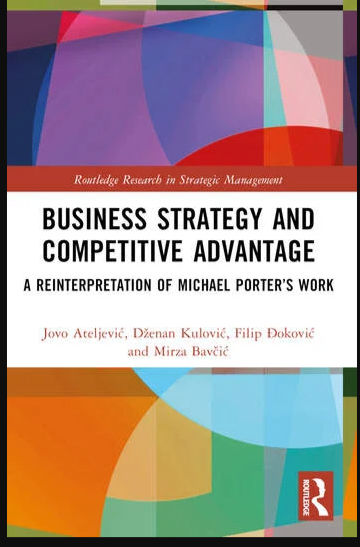Business Strategy & Competitive Advantage
- John Hansler
- Jun 16
- 2 min read
Updated: Jun 17
Book Review in Business Strategy

Routledge Research (2023) revisits Michael Porter's work with a modern perspective.
How good was it?
In short- great.
The review of the new paradigms in management in the opening chapter is very well done and perhaps the first two chapters can be considered essential reads for business professionals. These are clear, concise offerings on the overview of the strategic landscape in business, explaining, from a conceptual overview, how businesses obtain a sustainable edge.
There are a few main points: business is increasingly integrating technology; the value chain is now extensible and many businesses outsource certain business activities (which can reduce capacity constraints, for example); companies have abandoned the idea of a single, static defensible position and moved toward dynamic management; the competitiveness of business is now based on internal capability and differentiation.
Strong managers need to understand how to navigate the business environment effectively. Strategy and long-term goal orientation, anchor decision-making processes. Without that, businesses open themselves up to, what are effectively, random or aimless actions. I like to use analogies in chess: when trying to find the right move, you can sort through every option, of which there are endless, but its better to first find your target and work backwards. It thins out the field of examination and leads to more correct actions. What this should tell us is that, while you obviously need to understand how to tweak short-term action to orient yourself properly, the real goal and most important skill is to first identify the target: 'Where do we need to be?'
From that, everything flows.
Aside from the first couple chapters, there are a few things we should understand about Michael Porter's work and the larger strategic sphere from this reading. The first is that Michael Porter contended that businesses can obtain advantage through cost leadership or differentiation (generally), but that cost leadership (or competitive advantage through operational efficiency) leads to a 'dog eat dog' outcome, so its better to focus on differentiation as the driver of profit and sustainability. Additionally, Porter had proposed external (Porter's 5 Forces) and internal analyses (Strategic Company Analysis, where he defines strategic business units and their disaggregation). Much of this discussion felt superfluous, but that probably says more about me than the book. For example, looking at drivers of cost follows a seemingly obvious process of: identify where to cut costs, use competitors as inspiration, integrate into strategy, review and modify. However, the book is detailed and fleshes out the concepts fully. Additionally, these can still be templated and used as checklists, which makes it a great reference material.
The book also discusses green marketing and the various drivers of differentiation. All in all, great read and relatively short (~160 pages), highly recommended.


Comments